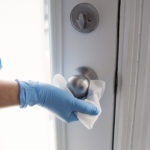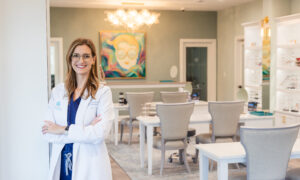By Brian Chou, OD, FAAO

April 22, 2020
The end of the COVID-19 pandemic is still far off, but at some point, most of us will substantially return to practice. When that time comes, neither our patients nor we will be the same. Quarantined to our home and overexposed to news media, we may collectively suffer a heightened level of anxiety. Behaviors previously thought of as germophobic, will seem normal.
Even when your practice is ready to see patients again, your patients and team may not feel comfortable or safe. Here are precautions to consider implementing:
1) Limiting patient traffic to enhance physical distancing.
2) Enhanced sick time for staff, so that if they are not feeling well, they are not incentivized to report to work.
3) Issuance of protective masks and gloves for team members as well as doctors.
4) Keeping the front door open to eliminate door-handle contact.
5) Requesting that patients with symptoms of illness, and those at higher likelihood of exposure to coronavirus, postpone their visit.
6) Limit any patient companion to a parent, guardian or caretaker.
7) Screening forehead temperatures using non-contact thermometers and sending home patients with fevers.
8) Online patient registration at home to eliminate clipboard and pen contact (or giving disposable pens to patients).
9) Ask patients to wait in their car and text them when ready.
10) Increased disinfection of surfaces.
11) Banish handshaking in favor of a gestured greeting.
12) Installation of breath guards for slit lamps. Topcon, Zeiss and Haag-Streit are offering these at no cost.
13) Increased use of contact-less payment, including Apple and Samsung Pay.
14) Increase use of direct-to-patient delivery of product, as appropriate.
15) Holding shipments for a period (e.g. 48 hours) before handling them.
Which you implement is a judgement call. Each of us will certainly be motivated to institute enhanced precautions. But it may not be clear if they are effective. In some cases, the greatest value is in making patients and us feel safer. An example is disinfecting instrument surfaces and using fresh chin-paper.
Other Articles to Explore
These may be more psychologically comforting to the patient than effective in preventing infectious transmission. Their efficacy isn’t known. Yet the feeling of comfort cannot be underestimated. This cleaning should take place conspicuously in front of the patient.
It is like going to the restaurant where your drink’s straw is served with a wrapper still at the end of it. The wrapper remnant visually conveys effort to sanitation, even though it is unknown if it really reduces the risk of transmitting food-borne illness.
Here’s an example where an implementation for safety has not worked, highlighted by economists Steven Levitt and Stephen Dubner. In their book, Freakonomics, they describe how after the events of 9/11, new Transportation Security Administration (TSA) screening requirements imposed an additional delay for each traveler.
By taking the additional time for every traveler, translating it into life-years, dividing by the average life expectancy, they calculated the number of people who effectively died waiting to get through the gate. It turned out that more Americans died each year from waiting in line for TSA compared to terrorist-related deaths! Yet, as travelers, we accept these security requirements for the feeling of safety. All this is not to suggest that practitioners not try to enhance safety. We need to. But as a byproduct it may mean that we unwittingly implement some precautions that soothe our collective psyche more than improve safety, while also reducing operational efficiency.
Many of us look forward to enhancing both the perceived and actual safety for our employees and patients. What remains to be seen is if our initial reaction and over-sensitivity to cleanliness and disinfection will persist or relax with the passage of time.
 Brian Chou, OD, FAAO, is the owner of ReVision Optometry in San Diego, Calif.
Brian Chou, OD, FAAO, is the owner of ReVision Optometry in San Diego, Calif.



























